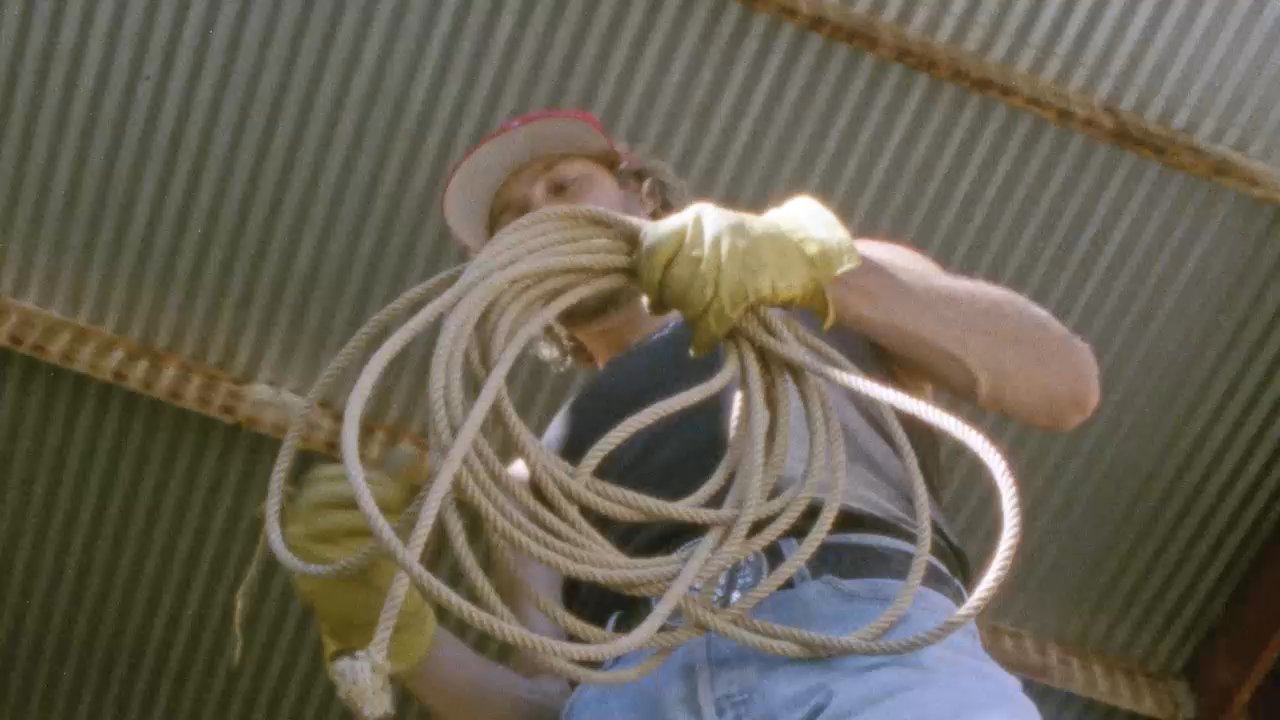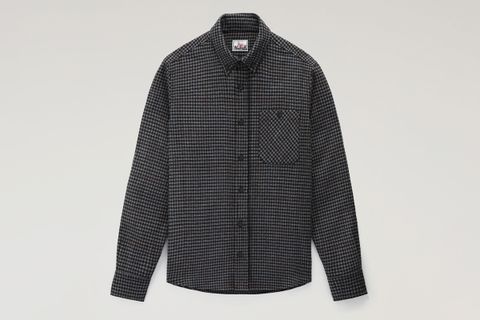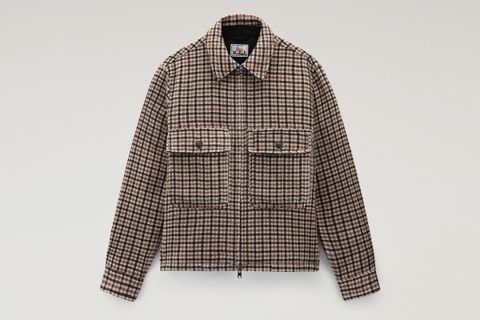
This is a three-part series about the Woolrich Flannel. Click here to explore the rest of the stories and find out more.
By now, you’ve all seen or heard about the iconic, yet humble, Woolrich Flannel.
There’s no denying that when it comes to the classic cross-hatch pattern, from lumberjacks and huntsmen to skaters and hip-hop musicians, the flannel has marked its territory in the outerwear scene. For over 170 years, Woolrich has been using wool flannel fabric to offer a versatile, warm and durable piece of clothing to subcultures around the world — no matter how it’s been adapted, the flannel has remained a true classic.
It’s time to go back to the original workwear roots and American craftsmanship of the Woolrich flannel and see it in a new, nuanced light. Back in the Flannel's cultural home, we hone in on a creative whose practice personifies this American authenticity with a contemporary twist.
Born in Evergreen, Colorado, a small town in the Rocky Mountains, Luke Gilford is a fearless storyteller when it comes to paving a new path for queer cowboys. Not only does he cement their place in rodeo culture, but Gilford honors his American heritage by drawing from the country’s vast, rural landscapes. Decked out in the flannel, we capture and catch up with Gilford amongst California’s golden Americana.
So Luke, describe what you remember seeing around you as a child. Were you outside a lot?
My dad was in the rodeo, and we would travel all over the Southwest to Wyoming and Montana, Arizona, and New Mexico —those are all my earliest memories of the rodeo. My greatest memories from the rodeo are actually the sensory experience. The peaks of pastel, geographies and the sunsets, adrenaline, the courtship and the sounds and smells of animals, sweat, blood, barbecue, denim, hairspray, flannel, alcohol, skin, and dirt.
I was always out in nature, in the forest, and swimming. I think I felt more comfortable underwater than on land. There was this sense of wonder that I felt in nature that I still am always seeking out.
When did you first pick up a camera? What did you find yourself drawn to creatively when you were young?
It must have been when I was in high school. I felt a pull within me that I couldn't even explain to pursue directing and photography before I even understood it as a career path
I was a competitive swimmer, and I needed some kind of creative outlet because I was underwater for so much of my life. I was always kind of a lone wolf, and creatively I was most drawn to the people closest to me. I remember taking portraits of my mother, father, my grandmother. I was always really drawn to portraiture and documenting the people around me. Faces tell stories, and I wanted to be a storyteller. My father was kind of a hero to me as I spent so much time witnessing him at the rodeos and training.
What places did you feel tied to most?
Specific locations I remember feeling really connected to were anywhere with wide open landscapes. I remember before I could even put words to it, I felt an emotional and almost spiritual connection to wide open landscapes, whether it be the desert or even the beach — I think because of the light and the wide open space, it feels transcendent.
Where do most of your inspirations come from now?
Storytelling. I've really been inspired by narrative work more so than photography. In the last few years, I've been writing scripts and developing feature film projects. To tell a larger story and to connect with characters and emotions and feelings and stories.
What about the cowboy and rodeo culture do you love most? Tell me more about how your work reinterprets cowboy identity in an Americana style.
I think the mythological figure of the cowboy has always been inspiring to me creatively as a child, witnessing my father. But it's continuously fascinating to me the mythology of it within our American culture as a figure that represents freedom and independence and a connection to animals in the land. What I find most interesting is redefining that for the world that we're living in, which includes people of color and queer people — it's not a fixed identity. It's been sort of the basis of this body of work, of seeking out people who are not the stereotypes that we often think of when it comes to rural America.
As we know, cowboys wear a lot of flannel, but how would you describe your style? What does this kind of personal authenticity mean to you?
Authenticity to me is honesty. It cannot be denied. It's who you are without premeditation. It's your roots. I wear a lot of my dad's clothes, actually. To me, that feels comfortable and honest, and it's a way of expressing my love and admiration for my own family and where I've come from. It's inspiring to not only look in the past but also look forward and redefine what our family has laid out for us and where our past has brought us to. We're also living in a very political, divisive, and fraught moment that can be scary. I think that art reflects that. It needs to reflect that.
What do you think the most important message you are trying to convey through your work is?
A lot of POC queer people feel they aren’t welcome in rural places, even if they feel inspired by them. I want to share that there are other ways of life and communities out there. Queer people, especially since the dawn of time, have been finding spaces, supporting one another, and living together as chosen families. I hope my work inspires people to find and make their own communities and also to conjure and represent a more modern version of the American Dream.
What is the American Dream to you?
I think a lot of us have grown up with this idea of America as the home of the brave and the land of the free. So many of us then came to realize that some of that is a myth, and I hope that this body of work can inspire people to create those narratives for themselves on their own terms — returning the aura of promise to this notion of America. America was never one thing. Its greatness, promise, and idealisms are proportionate to its heterogeneity. All of us who are part of this country in whatever way find and build our lives in it.
I hope to honor outsiders and non-standardized forms of beauty and most importantly, the power of chosen families. I want to offer up a more modern and nuanced version of the classic American Cowboy.
Similar to how Gilford’s approach is one of inclusion and democratization, flannels have long been a symbol of a level playing field. Worn by people from all walks of life and various working fields, the Woolrich Flannel is a symbol of culture that has and will continue to surpass the changing times.
Shop the Woolrich Flannels here.


